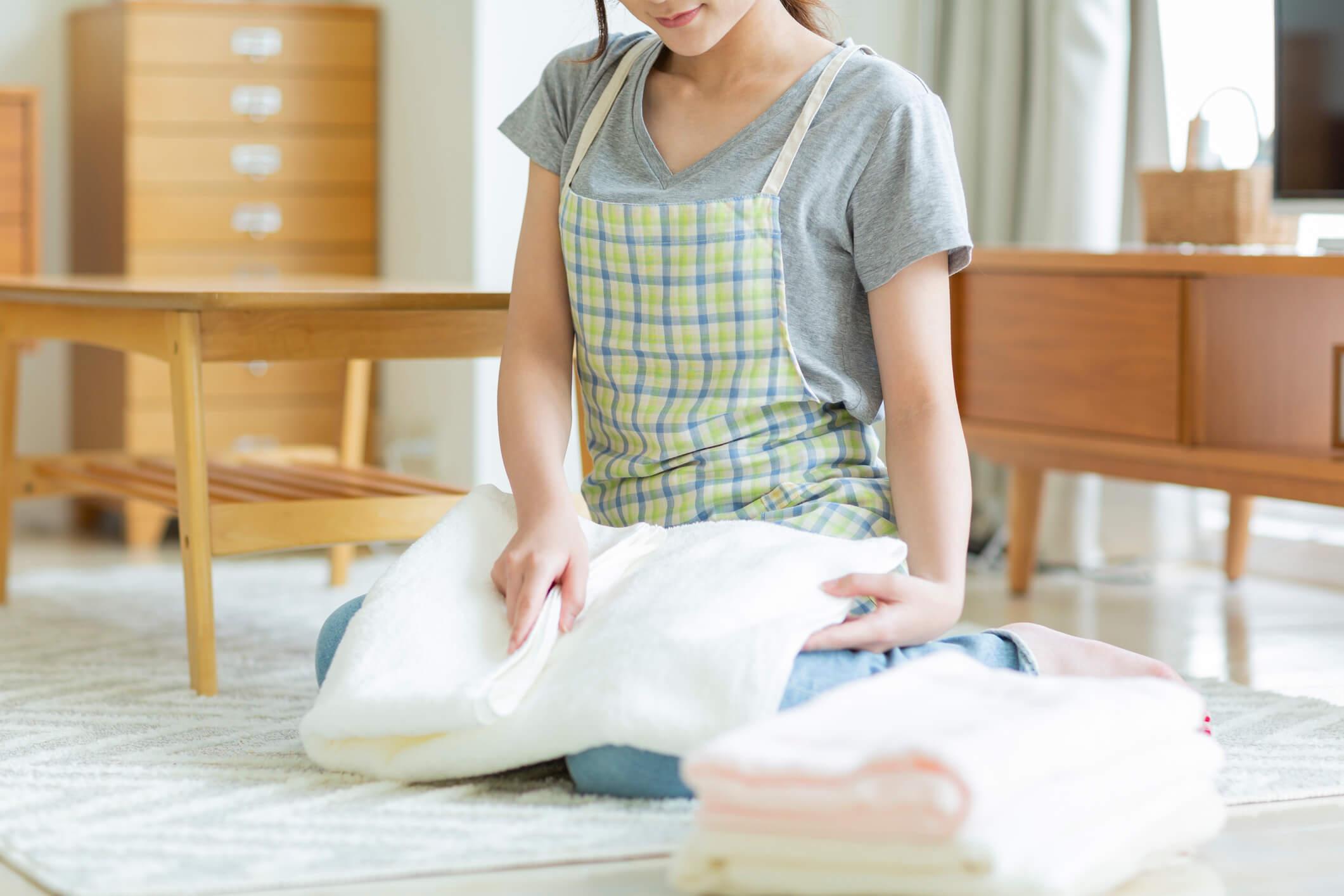Blankets are used for many reasons and in a variety of settings and temperatures. Typically, we own multiple blankets and choose the one that best fits our current needs. For example, we may sleep with a heavier and higher quality blanket than the one we use to curl up in while watching a movie on the couch. Plus, the more people living in the house, the more blankets you are likely to find there.
With all those blankets, it’s important to have a system in place, or at least a few simple rules and tools, to keep your cuddly covers organized. Use the tips below to learn how to fold blankets and how to store them around the house so they’re easily accessible but not underfoot or piled all over the place.
Types of Blankets
The types of blankets you use most often will help you determine how best to store and care for them. Consider organizing them according to the part of the house you are most likely to need them. If you store all your blankets in an upstairs linen closet and find yourself cleaning the baby’s bedding in the middle of the night (on the main floor), you don’t want to worry about running all that way for a new one. Below are some suggestions for grouping different types of blankets for storage.
- Bedding: Comforters, quilts, queen-size minky blankets, and extra blankets for cold nights
- Family room: Fleece, minky, throw blankets
- Baby and kids: Baby bedding, swaddle blankets, kids bedding, comfort items (“blankies”)
- Travel: Multi-purpose baby blankets, picnic blankets, camping blankets
Folding Techniques & Tips
Learning how to fold a blanket to maximize storage space is a useful skill that only takes a small amount of practice. There are several ways you can fold blankets, depending on preference and even the type of blanket. For example, a comforter that is large and fluffy may only fold one way. Throw blankets or other thin blankets can be folded lengthwise or horizontally and either laid flat or rolled.
- Always fold blankets as soon as they are dry to maintain fluffiness and avoid wrinkles.
- For comforters: Lay flat and fold in thirds. If possible, fold in half lengthwise afterward or in thirds again.
- For Quilts: Lay flat and fold each corner into the center, with the folds along the seams or bias. Fold in half until it is small enough to store.
- Use ribbons or decorative ropes to wrap folded comforters and other large blankets. This will help them hold their shape while stored. You can also use breathable linen bags.
Storage Techniques
Next, you’ll need to learn how to store blankets. If you frequently use them, you can drape them over a chair or use a decorative blanket ladder to hang them. You can also find beautiful, large baskets and roll thin blankets to store several at a time. With larger blankets that are used less frequently or stored for months at a time, use the tips below.
- Store blankets in a space with plenty of airflow and little to no moisture.
- Use sachets to keep blankets smelling fresh when not in use.
- Do not store blankets in airtight containers, or they may get musty.
Blanket Hygiene
Just like sheets and other bedding, your blankets will need to be cleaned periodically. They are exposed to dust, sweat, germs, and more, which you don’t want hanging around for too long. Learn how to keep your blankets clean (link to previous article?) and be sure to follow the manufacturer’s instructions closely, especially for down comforters, minky blankets, and handmade quilts.
Sew Sweet Minky Blankets
Now that you’ve become an expert on how to fold blankets, store them, and clean them, it’s time to stock up on beautiful, comfy blankets for every room of the house.
Check out Sew Sweet Minky Designs for a super soft minky blanket for bedtime, movie night, snuggling, reading, and more. We have a variety of colors, sizes, and styles for everyone in the family. Plus, our minky blankets are handmade by local moms and grandmothers, so when you get a cozy blanket for your own family, you’re also supporting other families in the area.


Share:
How to Make Minky Blankets Soft Again
How to Make a Blanket Ladder